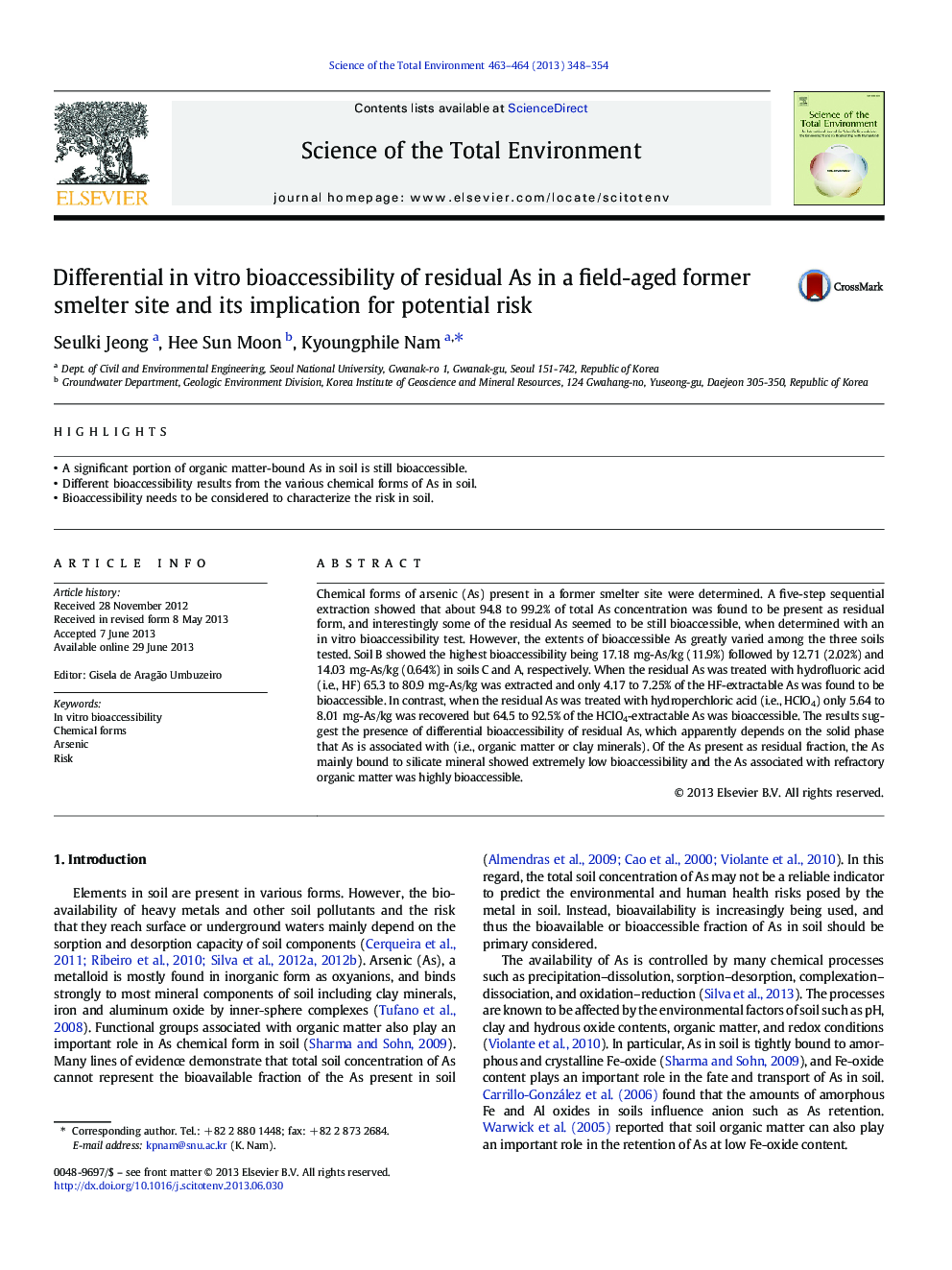| Article ID | Journal | Published Year | Pages | File Type |
|---|---|---|---|---|
| 6332770 | Science of The Total Environment | 2013 | 7 Pages |
Abstract
Chemical forms of arsenic (As) present in a former smelter site were determined. A five-step sequential extraction showed that about 94.8 to 99.2% of total As concentration was found to be present as residual form, and interestingly some of the residual As seemed to be still bioaccessible, when determined with an in vitro bioaccessibility test. However, the extents of bioaccessible As greatly varied among the three soils tested. Soil B showed the highest bioaccessibility being 17.18Â mg-As/kg (11.9%) followed by 12.71 (2.02%) and 14.03Â mg-As/kg (0.64%) in soils C and A, respectively. When the residual As was treated with hydrofluoric acid (i.e., HF) 65.3 to 80.9Â mg-As/kg was extracted and only 4.17 to 7.25% of the HF-extractable As was found to be bioaccessible. In contrast, when the residual As was treated with hydroperchloric acid (i.e., HClO4) only 5.64 to 8.01Â mg-As/kg was recovered but 64.5 to 92.5% of the HClO4-extractable As was bioaccessible. The results suggest the presence of differential bioaccessibility of residual As, which apparently depends on the solid phase that As is associated with (i.e., organic matter or clay minerals). Of the As present as residual fraction, the As mainly bound to silicate mineral showed extremely low bioaccessibility and the As associated with refractory organic matter was highly bioaccessible.
Related Topics
Life Sciences
Environmental Science
Environmental Chemistry
Authors
Seulki Jeong, Hee Sun Moon, Kyoungphile Nam,
